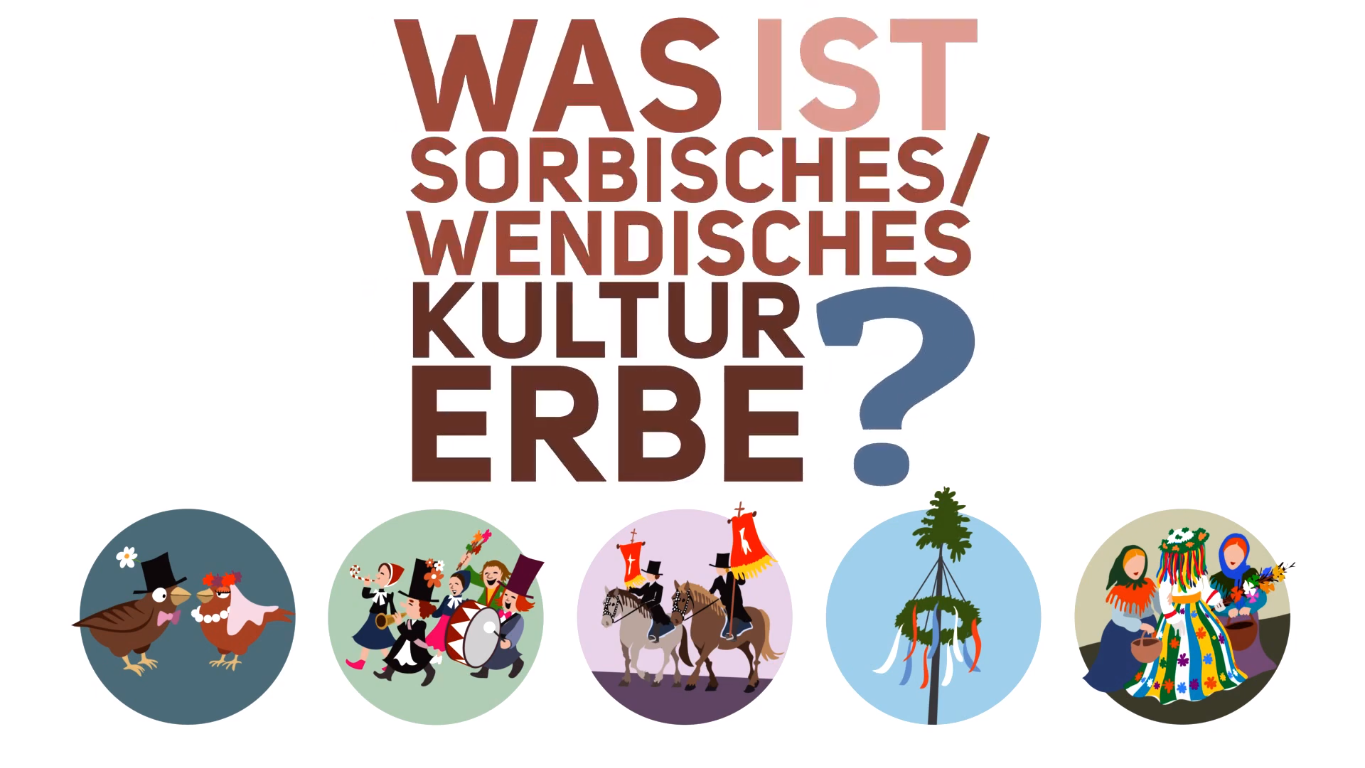Living Cultural Heritage
Background
The aim of the project “Digital Portal to Sorbian and Lusatian Linguistic and Cultural Landscapes” is to present Sorbian/Wendish cultural assets in Lower Lusatia on a multilingual and accessible online portal.
To this end, data on various Sorbian/Wendish aspects of the Lower Lusatian cultural landscape – from cultural practices and material evidence to Lower Sorbian literature, proper names, and Sorbian elements of the linguistic landscape – will be systematically collected and prepared for use.
The project is aimed at researchers, as well as interested parties and regional cultural professionals in associations, in education, cultural tourism, and the creative industry.
The aim is to make the region’s Sorbian linguistic and cultural heritage more visible and to preserve and utilize it for future generations.
The project team’s understanding of cultural heritage can be seen in the explanatory video “What is Sorbian/Wendish Cultural Heritage”:
The sub-project “Practices of Intangible Cultural Heritage in Lower Lusatia” aims to develop specialist knowledge on the diversity of the living cultural heritage of the Sorbs/Wends.
According to the UNESCO Convention for the Safeguarding of the Intangible Cultural Heritage of 2003, this includes not only orally transmitted traditions and performing arts, but also social customs, rituals and festivals, knowledge related to nature, and traditional craft techniques.
The project initially focuses on Lower Lusatia (Brandenburg) but is intended to be expanded in the future. It incorporates results and experiences from the already completed project “Systematic and Updated Inventory of Customs and Festivals in Lower Lusatia”.
Standardized questionnaires for surveys on social customs and festivals were developed there, based on the application for inclusion in the nationwide inventory of intangible cultural heritage, and a prototype of a database on customs and festivals was created using the example of the Spree-Neiße district/Wokrejs Sprjewja-Nysa.
In addition to consolidating, expanding, and continuously maintaining a database of intangible cultural heritage practices, appropriate digital user interfaces will be developed for both public and academic needs in order to answer research questions, such as biculturalism and multiculturalism in everyday life, cultural resilience, and the use of the Lower Sorbian language in cultural practices within the Lower Lusatian linguistic landscape.
The emerging network of intangible cultural heritage sponsors, supporters and experts, which is being created within the project, will be used to establish an advisory center on intangible cultural heritage practices in sense of civil society and educational policy transmission.
The advisory center is intended to act as contact point for associations, groups and interested parties from the Sorbian/Wendish or regional context and, among other things, to provide technical support for initiatives and applications for inclusion of cultural expressions and good practice examples in the nationwide inventory of intangible cultural heritage.
